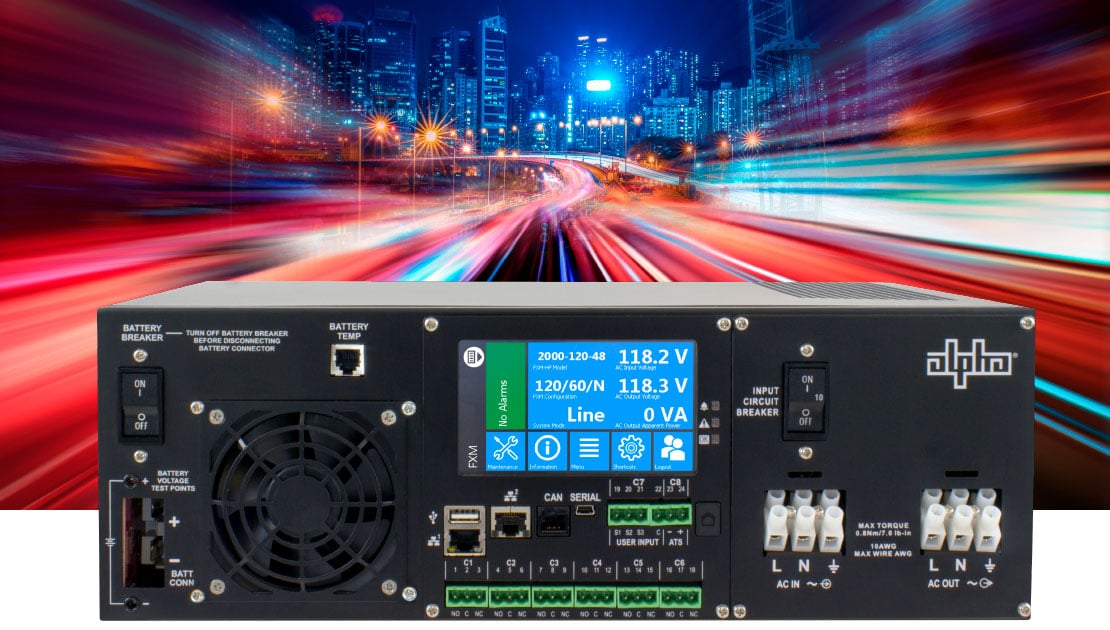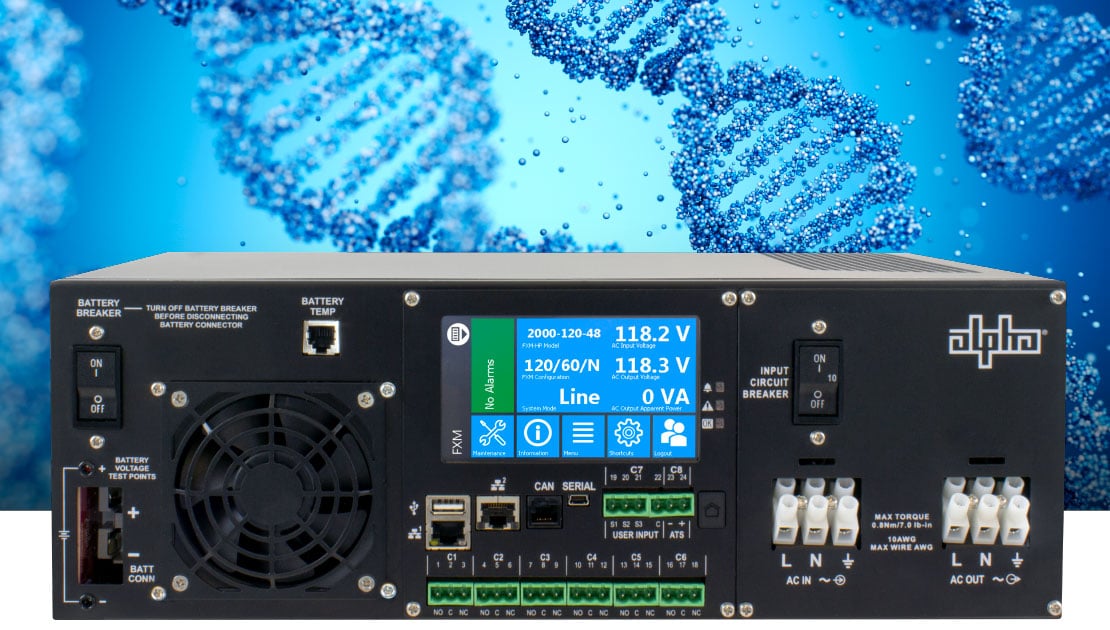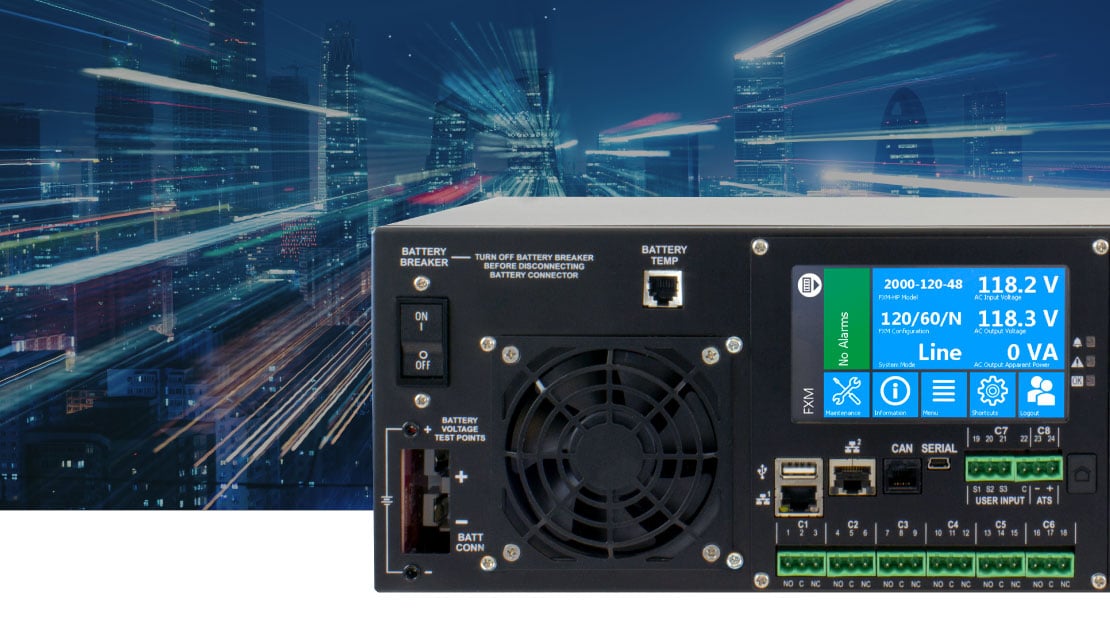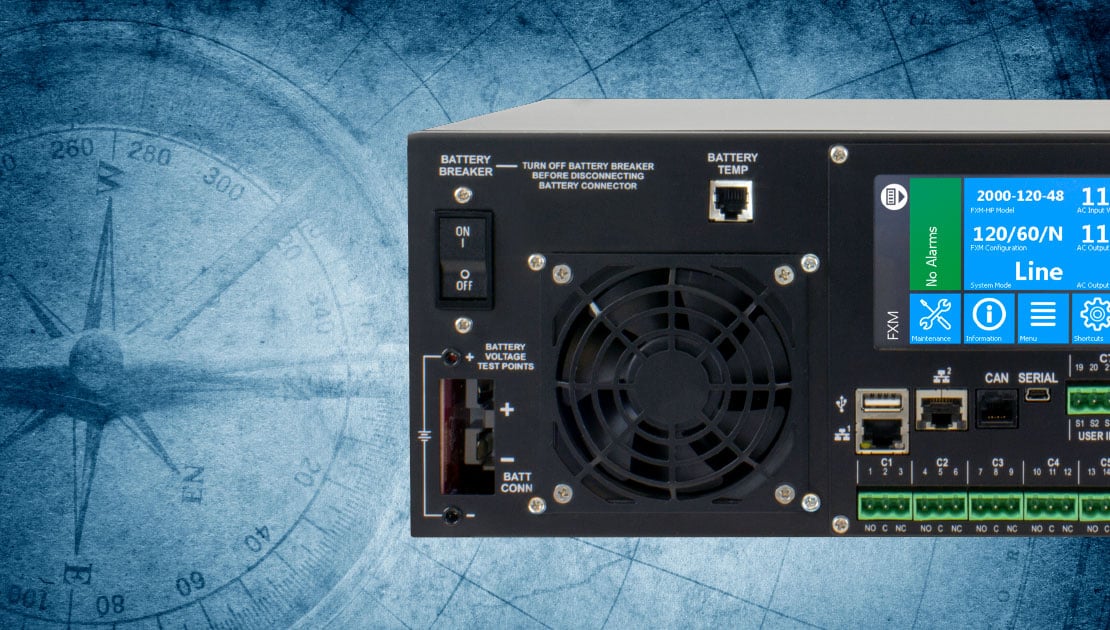Runtime & Right Sizing a UPS

A common question I get asked is, "How much runtime will I have with a backup power system?" It’s a good question to consider as you design your system for your typical and extended power outages. The answer of course varies but is greatly affected by two main variables: size of the load and capacity of the battery bank. It is further affected by inverter and battery efficiency, temperature, and the age of the batteries and their general health.
If we look at a typical LED traffic intersection, it will draw somewhere between 300-450 watts in fully automatic operation. An ITS application load will vary greatly depending on what you are backing up. When adding a UPS to provide backup power, most agencies will want to run their intersections in fully automatic mode for at least 2 hours and many will target 3-6 hours minimum. To help with extended outages (longer than 2 hours), it’s helpful to take the intersections to flash when the capacity of the battery string drops to about 40% capacity remaining while in backup. This will cut the power consumption by almost half, thereby extending runtime in the intersection. How long is a typical outage in your area? In North America most outages are less than two hours. Decide how much runtime you are needing for automatic and flash operation, or your straight runtime if you’re backing up an ITS application.
WHEN ADDING A UPS TO PROVIDE BACKUP POWER, MOST AGENCIES WILL WANT TO RUN THEIR INTERSECTIONS IN FULLY AUTOMATIC MODE FOR AT LEAST 2 HOURS AND MANY WILL TARGET 3-6 HOURS MINIMUM.
Next, is to decide what size batteries to use, you’ll need to know how much power your typical intersection or ITS load will use. This is easily measured with a clamp-on ammeter. Measure the AC amps and multiply by the AC voltage to get watts. We’ll use this in the calculation below. Generally though, most agencies will use our 195XTV (100Ah) or 240XTV (112 Ah) batteries for intersections. You can certainly go smaller or larger, and even multiple strings to achieve the runtime you need. The good news is that even with four 100Ah batteries and a 450-watt load, the fully automatic runtime will be over 8 hours, which far exceeds the typical outage.
To calculate the battery size needed, the easy route is to reach out to your local Alpha® Traffic distributor or me, as we have a handy calculator I created. We’d be glad to help you with your design. Or, if you want to run your own calculations the formula is this: Battery String Ah = ((Load (in watts)/Inverter efficiency at that load)/Nominal UPS String DC Voltage)*Runtime Hours Desired or for example, using the above 450-watts and 8 hours, ((450/.84)/48)*8 = 89.29 Ah required, so a 100Ah battery string. We must take assumptions when we don’t have all the data, so if you don’t know the inverter efficiency, then assume 0.80 if the UPS is at least 40% loaded. Since we aren’t pulling data from a battery discharge table for this calculation, the battery Ah required will be slightly more than the calculated value. The goal here is to get you in the game as far as the numbers go and you will need to round up to an available battery size anyway. You may also want to be sure you’ve added in a little Ah headroom to account for battery aging and loss of capacity due to cold temperatures if you are in an area that gets near or below freezing.
I do a lot of woodworking and rely heavily on power tools. For safety, it's important to use tools that won’t bog down during tasks, like when operating a table saw or router. In many cases, bigger really is better. This is not the case with UPS. It is important to right size the UPS to the load to maximize the runtime and the life of the UPS. The efficiency of a UPS will increase and then plateau as the load gets closer to the rated output of the UPS. For example, let’s assume the 450-watt load again and this time let’s compare runtimes using an 1100 and 2000 watt UPS. With this load the 1100 will provide just over 8 hours of runtime but with the 2000 it will drop to 6.26 hours. That’s almost 2 hours less runtime. At 450 watts the 1100 is about 41% loaded while the 2000 is only about 23% loaded. So, the 2000 will have a much lower efficiency with this load and therefore a shorter runtime. The situation gets worse as the load decreases, so if the load is only 300 watts the 2000 watt UPS will have almost 4 hours less runtime (12.67 vs. 8.82)!
To maximize the life of the UPS in an uncontrolled temperature environment, I would not load it more than 75-80% of its rated maximum output. Underloading the UPS will also make it run hotter due to low efficiency, and it is heat that shortens the life of electronics and batteries.
Most intersections do best with our Alpha® FXM HP 1100 UPS, as this will maximize intersection run time and the life of your equipment. Let us know if you’d like any assistance designing your system, we’d be glad to help!
Make it a great day!

Mike Olsen
Senior Technical Sales Representative
Caution Concerning Forward-Looking Statements
EnerSys is making this statement in order to satisfy the “Safe Harbor” provision contained in the Private Securities Litigation Reform Act of 1995. Any of the statements contained in this article that are not statements of historical fact may include forward-looking statements that involve a number of risks and uncertainties. A forward-looking statement predicts, projects, or uses future events as expectations or possibilities. Forward-looking statements may be based on expectations concerning future events and are subject to risks and uncertainties relating to operations and the economic environment, all of which are difficult to predict and many of which are beyond our control. For a discussion of such risks and uncertainties that could cause actual results to differ materially from those matters expressed in or implied by forward-looking statements, please see our risk factors as disclosed in the “Risk Factors” section of our annual report on Form 10-K for the most recently ended fiscal year. The statements in this article are made as of the date of this article, even if subsequently made available by EnerSys on its website or otherwise. EnerSys does not undertake any obligation to update or revise these statements to reflect events or circumstances occurring after the date of article.



